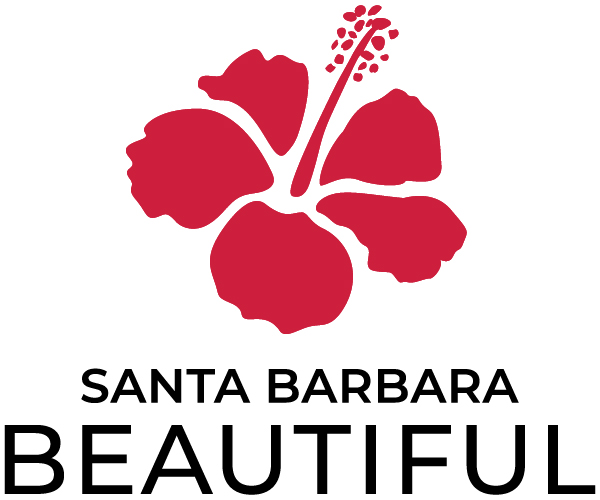Santa Barbara Beautiful Tree of the Month – September 2019

Island oak, the rarest oak in California, also happens to be one of the best broadleaf evergreen trees to plant in Santa Barbara, because it is such a stunning shade tree and because it is native to our area. No adaptation to our Mediterranean climate required!
Also called the Channel Islands oak, it is now only found naturally on five of our Channel Islands (Santa Rosa Island, Santa Cruz Island, Anacapa Island, Santa Catalina Island, and San Clemente Island), as well as on Guadalupe Island (off the coast of Baja California). However, the fossil record shows that, until about 3 million years ago, it was once widely distributed on the mainland of California, on the coast and up to 100 miles inland. In the 1980s, commercial propagation of the Island oak was started in a Goleta wholesale nursery; since then, it has been planted in Santa Barbara gardens and streetscapes in ever increasing numbers.
Island oak is a medium- to fast-growing tree which can reach a height of over 30 feet in about 30 years, with an ultimate height of 40 to 50 feet. Its outstanding characteristics include its dense pyramidal crown and easy maintenance. It is often low branching and relatively wide, providing sheltering habitat for our wildlife and casting a circle of dark shade, which is much appreciated by all when the weather is hot.
Its glossy, dark green, thick, leathery leaves are 2 to 4 inches long, 1 to 1 ½ inches wide, elliptical shaped, have prominent parallel veins, and are either edged with widely spaced teeth or are smooth. The undersides of the leaves are thickly covered with small white hairs, which give them a rather fuzzy feel. Its bark is gray and smooth when young, but turns brown, furrowed, and scaly with age. Generally, this oak has larger leaves and a much more lushly green and upright overall appearance that the more common coast live oak (Quercus agrifolia), another local native.
Male and female flowers appear on the same tree in March and April, with the tiny male flowers dangling down in 3 to 4-inch long catkins. The sparsely occurring 1-inch long acorns form in late summer and early fall and take two years to mature. Propagation is relatively easy from healthy acorns. The flowers and the acorns attract and support our wildlife.
Island oak does best near the coast in a location with full sun to part shade and deep, well-drained soil. It will grow in almost any type of soil, so long as it is not too wet. Its luxurious foliage is deceiving, since it is very drought-tolerant once established, though occasional water is helpful in the dry season, and is quite trouble-free.
Its botanical name is Quercus tomentella. The genus name, Quercus, is the Latin name for oaks and means “fine tree”. The specific epithet, tomentella, comes from Latin and means “covered with dense hair”, referring to the hairy underside of the leaves.
Island oak is highly valued for its beauty and its shade. It makes a well-suited and sustainable addition to our urban forest – and really should be planted more often around Santa Barbara. Do consider it for your landscape.
Island oaks can be seen at the Santa Barbara Botanic Garden. The largest cultivated one was planted there in 1965 and still stands in the Arroyo Section; in 2015, when it was 53 feet high, bore a crown spread of 60 feet, and had a trunk circumference of 91 inches, it was registered in the California Big Tree Registry as the “National Champion Island Oak”!
The Island oak shown in the photo for this article stands above the La Huerta Garden at the Santa Barbara Mission and is one of four Island oaks planted there in the 1980s by the Mission friars, reportedly from seed collected on Santa Cruz Island. Other outstanding specimens are located in West Alameda Park, on Western Avenue, in the 300 Block of East Pedregosa, on the grounds of the Goleta Valley Water District office (at the corner of Puente Drive and Hollister Avenue) and in the oak grove at the Historic Train Station in Goleta.
Tree-of-the-Month articles are sponsored by Santa Barbara Beautiful, whose many missions include the increase of public awareness and appreciation of Santa Barbara’s many outstanding trees and, in a long-time partnership with the City Parks & Recreation Department, the funding and planting of trees along the City’s streets – a project which has resulted in the planting, to date, of more than 13,000 street trees.
Article and photos by David Gress

